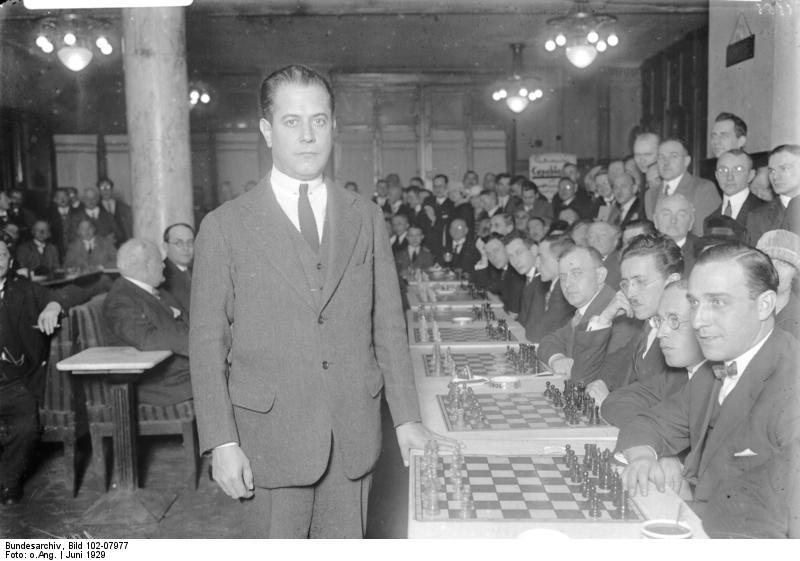
Capablanca's Nimzo-Indian: World Champion Openings
Like Emanuel Lasker, his successor, Jose Raul Capablanca, was less of a theoretician and more of a keen practical player. Lasker utilized his great psychological understanding and clever trickiness, while Capablanca's skill rested in his innate understanding of positional play and flawless intuition.
Thus, like Lasker, Capablanca hardly specialized in or introduced any new openings. His innovations occurred when, at the board, his intuition told him to play a move at some point in the opening that nobody had thought of yet. He was not preparing surprises for opponents at home, but inevitably a player with a higher level of understanding would introduce a few new ideas early on in the game.

During Capablanca's career, an opening was introduced -- the Nimzo-Indian Defense -- which is still popular and is considered one of the best openings.
In answer to the new opening Capablanca almost always played the move 4.Qc2. This move is often named after him. It suited his style and understanding of chess: no messy, ugly pawn structures would be created with doubled pawns.
White would recapture nicely with the queen on c3 in the event of ...Bxc3. In the meantime, Black would gain some lead in development, but Capablanca did not generally try to avoid any hint of attack against his position; if he felt the positional factors were in his favor, he was happy to defend and ride through the attack.
However, Capablanca's first outing of 4.Qc2 -- against the defense's namesake, Aron Nimzowitsch -- did not go as planned. Capablanca uncharacteristically made an incorrect pawn sacrifice as early as move five, and Nimzowitsch eventually managed to gain a winning position.
However, even on the rare occasions when he was outplayed, actually registering the point against Capablanca was still a great feat, and he managed to sneak out for a draw.
Now we will see a much more successful game by Capablanca in this variation. In the great 1938 AVRO tournament he won in thematic style from the ex-world champion Max Euwe. White gained the two bishops, used their greater mobility to effect the advantageous exchange of one of them, winning a pawn, and then smoothly brushed aside Black's last convulsions of attack.
Ironically, it was another world champion who, according to my information, introduced the move 4.Qc2; although as often is the case, the line is named after Capablanca because he used it so frequently and with great success.
As early as 1915, when Capablanca's successor Alexander Alekhine was a young man and the Nimzo-Indian was a total novelty (without any name, by the way), it was Alekhine who first played 4.Qc2 in a tournament game.
Next week, we will focus on one of the many openings connected with the fourth world champion, Alekhine.

